Mt. Fuji, the emblem of Japan, is also its tallest mountain. The majestic 3,776-meter-high mountain with its past of frequent and violent eruptions has long been an object of reverence and faith for many people. Its breathtaking appearance has inspired many artists, resulting in the iconic peak being featured in innumerable pieces of art. In 2013, it was registered as a World Cultural Heritage Site, its indisputable value recognized worldwide.

Since long ago, Japanese have regarded Mt. Fuji with awe as a mountain where gods surely dwell. The mountain has erupted repeatedly, reinforcing the image of an angry deity. Mt. Fuji became a place for ascetics to practice simplicity after the eruptive activity subsided in the late Heian Period (794-1185 ), and many penitents climbed to the summit, where they believed the world of Buddha existed. Later, during the Edo Period (1603-1868) , the Mt. Fuji religion called Fuji-ko became very popular among the commoners, and people began to climb Mt. Fuji and make pilgrimages to Fuji Five Lakes and other places. During the Meiji Era (1868-1912), the prohibition on mountain climbing by women was lifted, and with the development of railroads and road networks, even more enthusiasts began to climb Mt. Fuji.
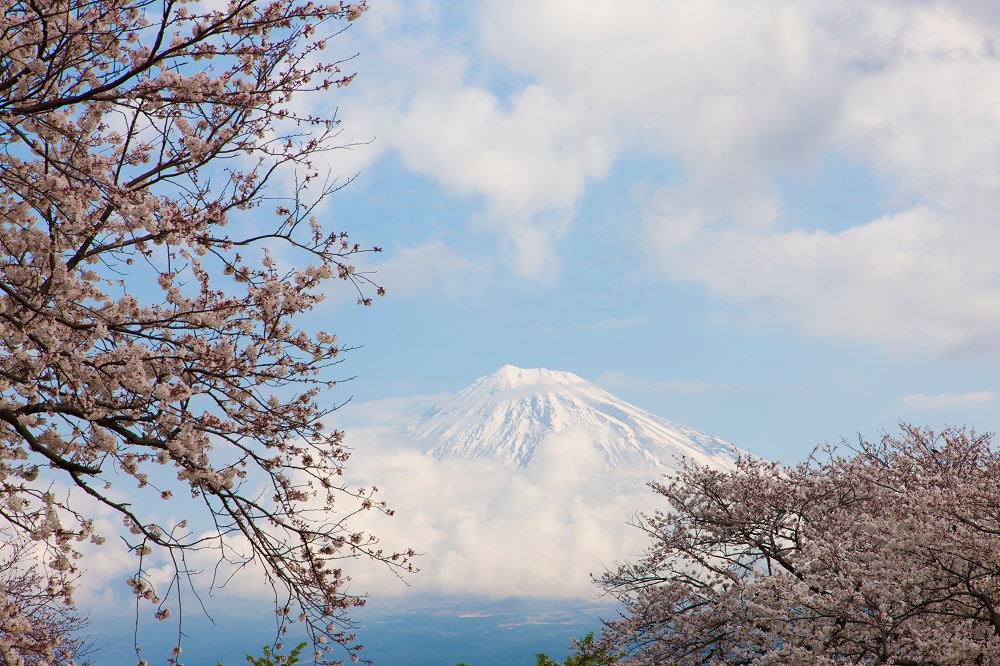
Mt. Fuji, registered as a World Cultural Heritage Site, has 25 diverse component assets. The area of Mt. Fuji, the climbing trails and the surrounding shrines and pilgrimage sites, including Fujisan Hongu Sengen Taisha Shrine are constitutional heritage spots, balanced between Shizuoka and Yamanashi prefectures.
The famous “Fuji Five Lakes” created by the volcanic activity of their namesake, are a part of the World Heritage listing: Motosuko, Shojiko, Saiko, Kawaguchiko, and Yamanakako. Mt. Fuji can be seen over each of the Fuji Five Lakes, and the idyllic image of Mt. Fuji upside down on the surface attracts many viewers. This scenic spot has long been the inspiration for art and is a recommended vantage point for taking pictures of Mt. Fuji.
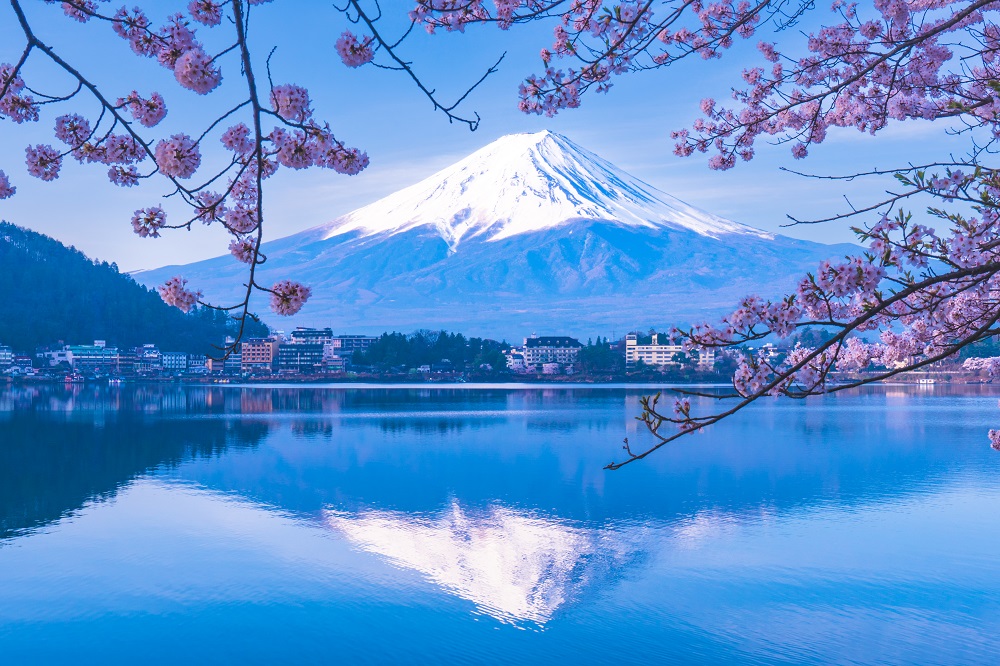
Mt. Fuji is accessible by car up to the fifth station. There are four different places designated as a fifth station in Shizuoka and Yamanashi prefectures that can be reached by car, three on the Shizuoka Prefecture side. The Fujinomiya fifth station in Shizuoka is the highest of the four, at 2,440 meters above sea level, and is the closest to the heavens, offering a myriad of views combining both sky and the grandeur of nature. The fifth station of the Subashiri trailhead, located on the east side, is the only one of the four trailheads located in a forested zone, allowing visitors to experience the natural beauty of Mt. Fuji up close. At the recently developed Gotemba Station, you can also see the wild side of the dormant volcano. Mt. Fuji can be appreciated in different ways depending on which route you take.
Fuji can be enjoyed by everyone from elementary school students to the elderly, but aspiring climbers should never get complacent. Summiting Mt. Fuji, which rises 3,776 meters above sea level, requires diligent preparation in advance, because the weather can change suddenly and make climbing dangerous, and your ascent may not go as planned. In addition to climbing shoes, rain gear, warm clothing, a hat, and a headlamp, you will need to bring plenty of water, food, and of course trash bags to avoid contaminating the trail. Please be sure to have the necessary equipment before you start climbing.

Fujinomiya Fifth Station
Take the Tokaido Shinkansen from JR Nagoya Station and get off at Shin-Fuji Station.
Take a mountain-climbing bus from JR Tokaido Shinkansen Shin-Fuji Station.
Subashiri Fifth Station
From Shinjuku Station, board the Odakyu Electric Railway Limited Express Fuji-san and disembark at Gotemba Station.
Take a bus from Gotemba Station on the JR Gotemba Line or Shin-Matsuda Station on the Odakyu Line (during certain periods only).
Gotemba Fifth Station
From Shinjuku Station, board the Odakyu Electric Railway Limited Express Fuji-san and disembark at Gotemba Station.
Take a mountain bus from Gotemba Station on the JR Gotemba Line.
Shiraito Falls, a component of the World Heritage Site, is where you’ll find hundreds of waterfalls, large and small, caused by snowmelt from Mt. Fuji cascading down a 20-meter-high, 150-meter-wide curved cliff. Water flowing from between the rock walls like so much white spun silk is aptly named Shiraito (Shiro = white, ito = thread), and this whimsical sight has been selected as a national scenic beauty.
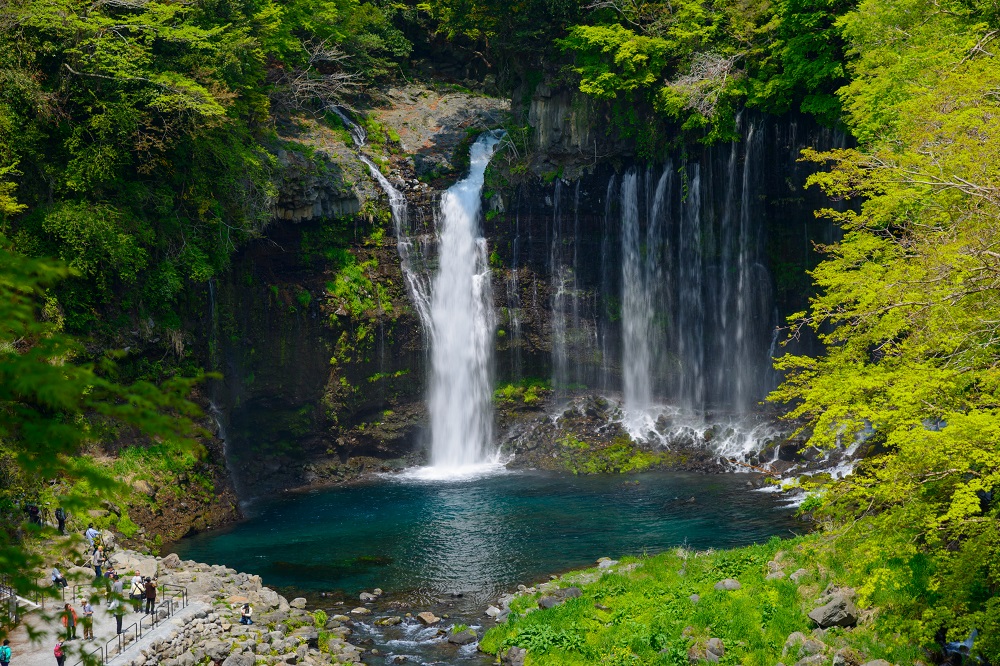
Mt. Fuji can be climbed from early July to early September each year. Start climbing from the fifth station and enjoy the changing scenery all around as you aim for the summit. On the way, you should stay overnight at a mountain lodge, because the view of the sunrise from the summit the next day is so spectacular that you can forget all the hard work of climbing the mountain. When ascending Mt. Fuji, it is recommended that you take your time and climb mindfully to avoid altitude sickness.
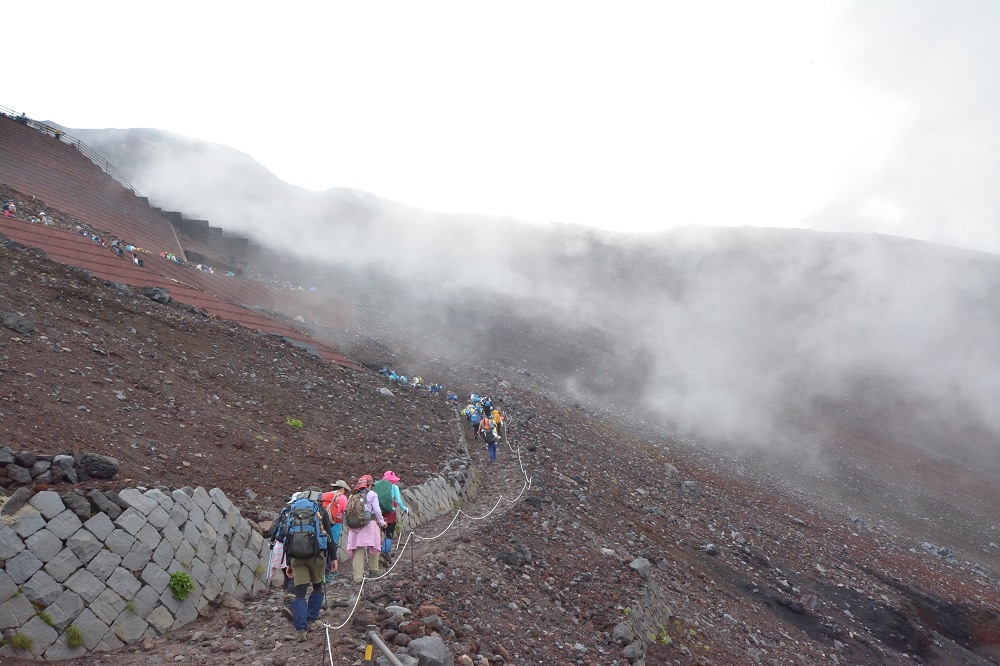
Mishima Skywalk, opened in 2015, is one of the newest tourist attractions in Shizuoka Prefecture. At an impressive 400 meters, it is the longest pedestrian-only suspension bridge in Japan. From the bridge, visitors can enjoy a panoramic view of Mt. Fuji , Suruga Bay, and the mountains of Izu. There are also cafes and restaurants around the bridge, where visitors can relax a moment while admiring the beautiful scenery.
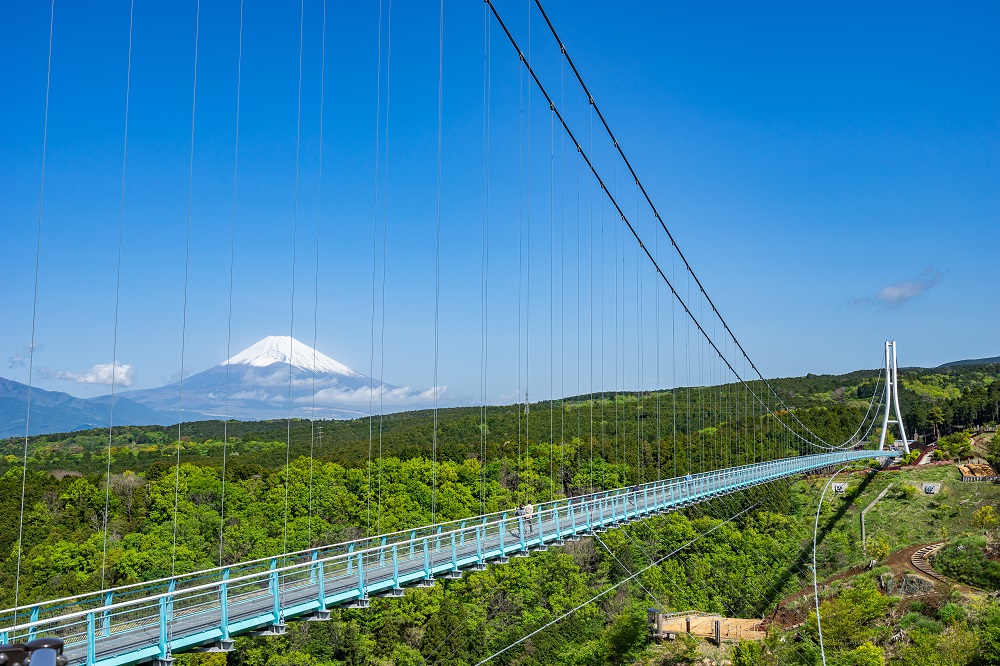
Fuji Hakone Izu National Park is part of the Fuji Volcanic Belt, with Mt. Fuji at its northern tip, and it showcases Japan and its volcanos. The park consists of various volcanic landforms, hot springs, varied coastlines and islands, and is divided into four areas : Mt. Fuji, Hakone, Izu Peninsula and Izu Islands. In the Mt. Fuji area, the World Heritage Site assets center on Mt. Fuji, however the Hakone area boasts such popular sightseeing spots as Owakudani, encircling the crater of Mt. Hakone, and Lake Ashinoko. In the Izu Peninsula and Izu Islands region, visitors can enjoy scuba-diving and swimming with dolphins. Each of the four regions offers its own unique sightseeing opportunities.
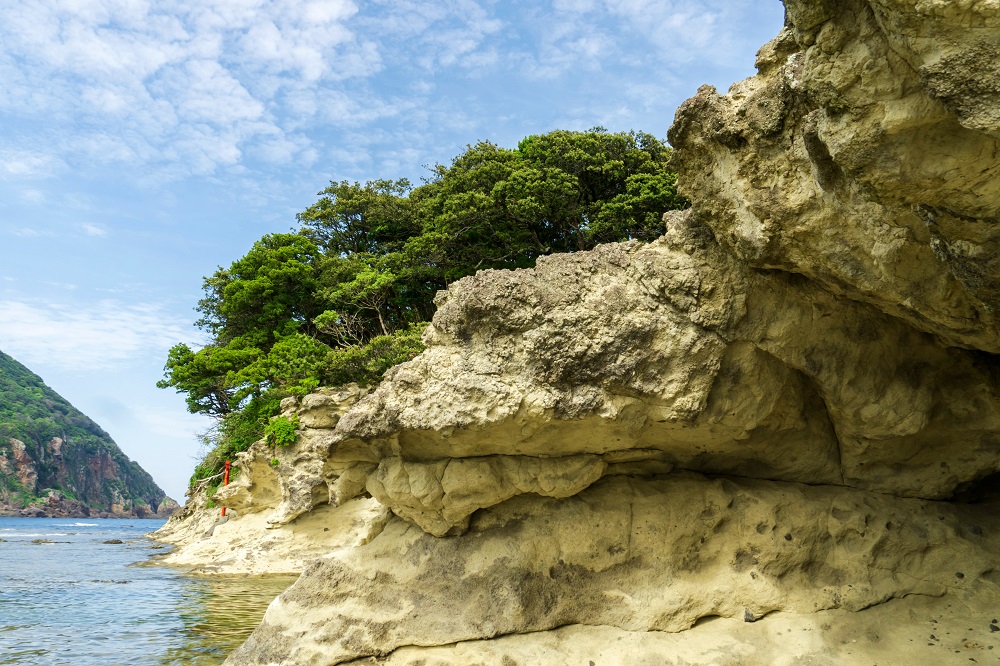
Fujisan Hongu Sengen Taisha Shrine, located in Fujinomiya City, Shizuoka Prefecture, is the head of all Sengen shrines in Japan. “Okumiya" is located at the summit of Fujinomiya Station, and the 8th station and above is the precinct of the Okumiya Shrine of Mt. Fuji. At the lofty Sengen Okumiya Shrine, it is possible to hold a wedding ceremony between July 15 and August 15, if you apply three months in advance and pay a ceremony fee of 100,000 yen. Every year several couples take advantage of this unique opportunity. The wedding party has to climb to the top in their finery, but surely it’s worth it for a memory that will last a lifetime.
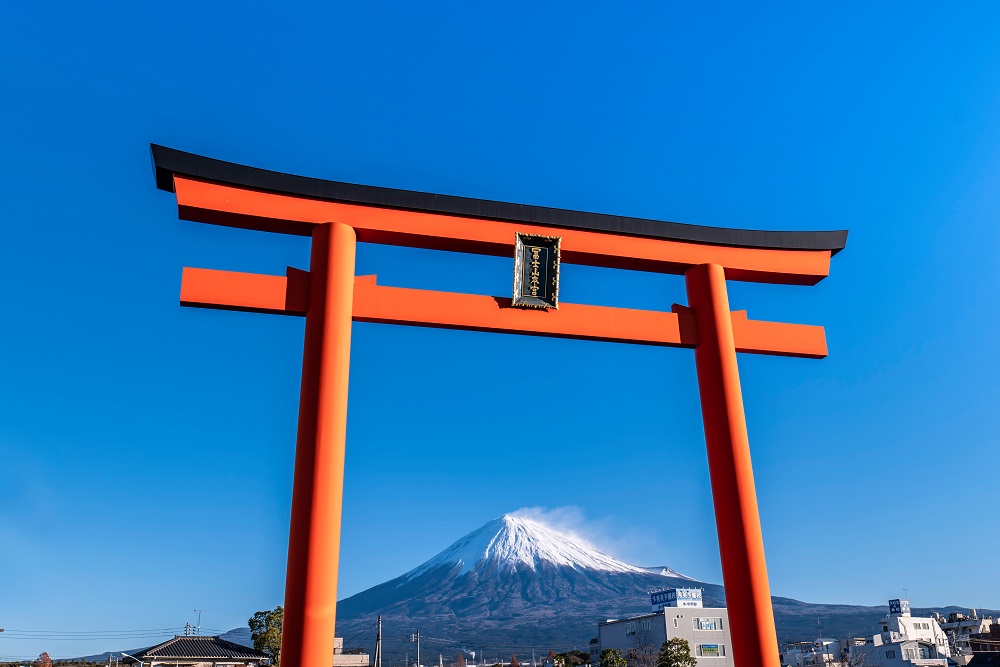
On Mt. Fuji, altitude sickness is the most common reason why climbers have to abandon their ascent. If you rush to climb the mountain in order to get to the summit as quickly as possible, you are more likely to suffer from acute altitude sickness. To avoid altitude sickness, it is recommended climbers ascend with plenty of time to spare, planning a journey that includes many stops to rehydrate and rest. It is important to allow for a practical climbing schedule.